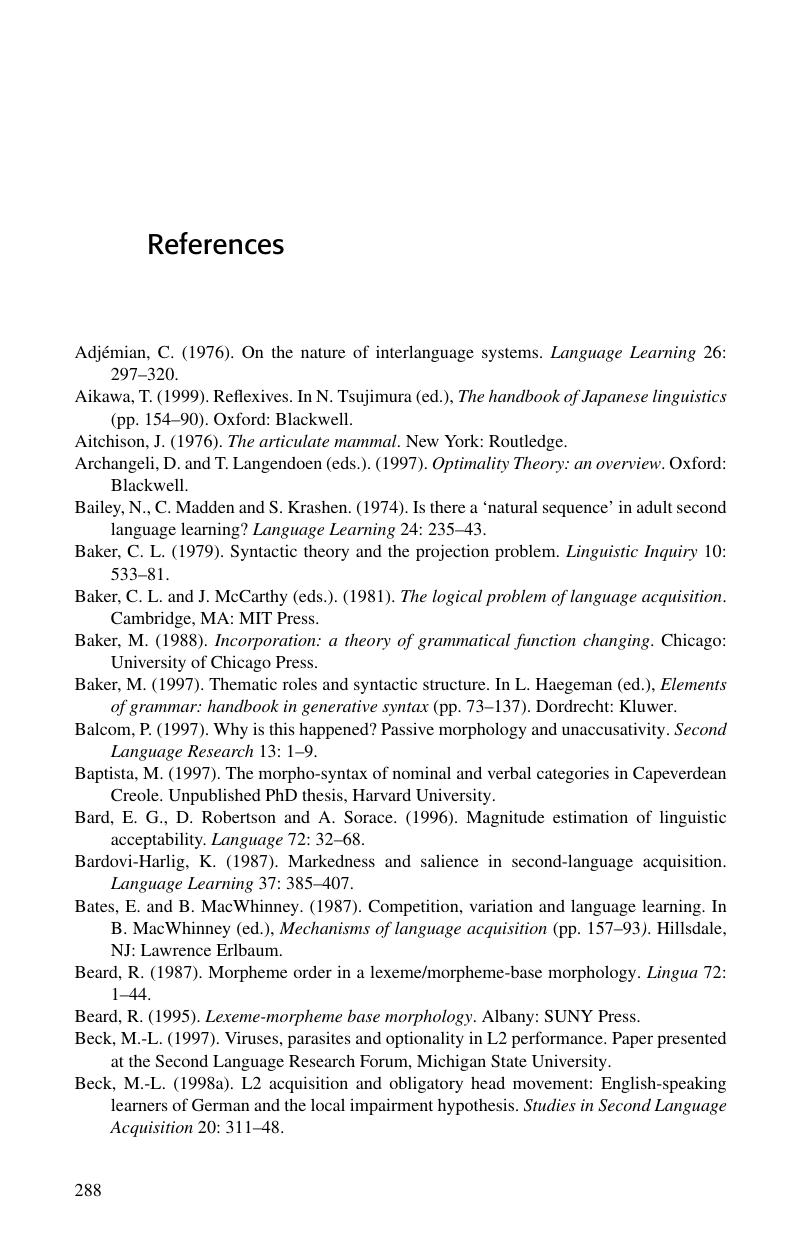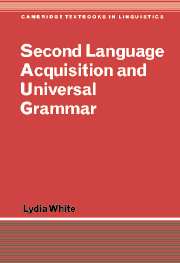Book contents
- Frontmatter
- Contents
- Preface
- Abbreviations
- 1 Universal Grammar and language acquisition
- 2 Principles of Universal Grammar in L2 acquisition
- 3 The initial state
- 4 Grammars beyond the initial state: parameters and functional categories
- 5 The transition problem, triggering and input
- 6 Morphological variability and the morphology/syntax interface
- 7 Argument structure
- 8 Ultimate attainment: the nature of the steady state
- Glossary
- Notes
- References
- Index
- References
References
Published online by Cambridge University Press: 05 June 2012
- Frontmatter
- Contents
- Preface
- Abbreviations
- 1 Universal Grammar and language acquisition
- 2 Principles of Universal Grammar in L2 acquisition
- 3 The initial state
- 4 Grammars beyond the initial state: parameters and functional categories
- 5 The transition problem, triggering and input
- 6 Morphological variability and the morphology/syntax interface
- 7 Argument structure
- 8 Ultimate attainment: the nature of the steady state
- Glossary
- Notes
- References
- Index
- References
Summary

- Type
- Chapter
- Information
- Second Language Acquisition and Universal Grammar , pp. 288 - 311Publisher: Cambridge University PressPrint publication year: 2003



